So far, we have established that dinosaurs are classified based on their anatomy and not on their integument (skin). We have determined that feathered dinosaurs are not conclusive proof of reptile-to-bird evolution, and that many extinct dinosaur groups had feathers. But while the fossil record of dinosaurs has been thoroughly discussed, the fossil record of feathers has not yet been blessed with the same treatment.
From the beginning, the existence of feathered dinosaurs has been controversial, even among evolutionists. This controversy has reached non-scientists too, including the school systems. Most people were taught in grade school that only birds have feathers, so naturally the extension to dinosaurs (which are portrayed in books and Jurassic Park as very featherless) is quite unpopular among many people. The ensuing pushback has forced feathered dinosaur advocates to study the evidence more closely, define their terms more clearly, and further establish their position.

In this section, we will concisely define feathers, detail the different types and variations of them, and then build on this foundation by describing the fossil record of feathers. On the way, we will address what feathered dinosaurs’ skin was probably like, and how this differs from non-feathered dinos. Finally, we will answer the question everyone asks after learning that feathered dinosaurs existed: did all dinosaurs have feathers?
Bird Feathers: Anatomy and Function
Though birds are one of the most popular animal groups in the world, many people are ignorant about general feather anatomy. It surprises most non-ornithologists, for instance, to learn that feathers grow like teeth do in humans. New, growing feathers push out the old, dead feathers until the old ones fall out.
Molting is the seasonal loss of feathers. In some species molting occurs all at once, in which case the bird loses flight until the next feathers grow in. In other species, molting can be a slow, precise process in which the feathers exchange systematically, two by two. When a left tail feather falls out, the corresponding feather on the right side also falls out, preserving perfect symmetry. This keeps the bird balanced, allowing it to fly, forage, and flee predators during the molting season.
Feathers are made of keratin. Keratin comprises many parts of animal and human bodies. For example, keratin comprises human hair and skin. Alpha-keratin is the fibrous, flexible keratin type found in your ears and nose. While alpha-keratin exists in all vertebrates, it is instead beta-keratin that entirely comprises bird feathers. Beta-keratin is rigid and made of polypeptides. Besides bird feathers, beta-keratin is also present in reptile scales.
Types of Feathers
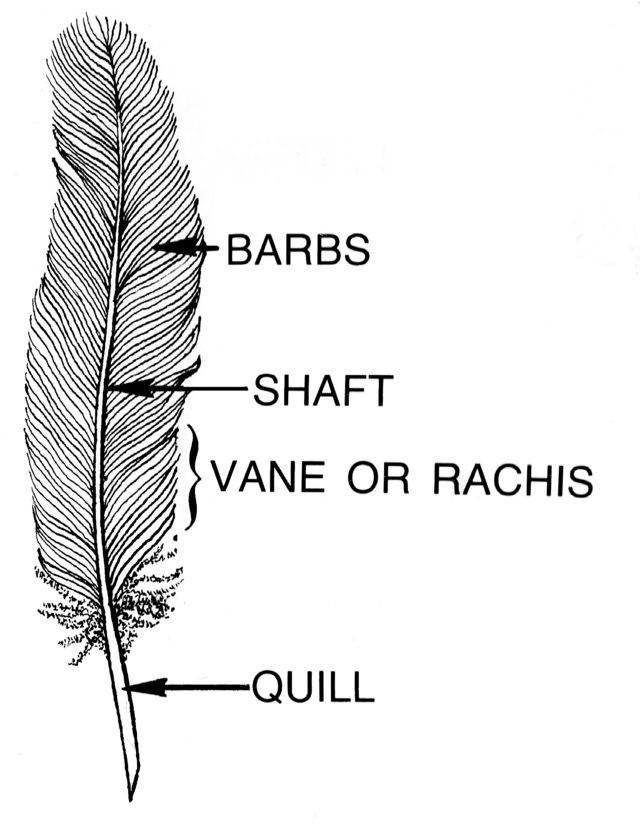
An abundant variety of feather types are present on every individual bird. All flying birds have flight feathers, tail feathers, and down feathers. In addition to these, many birds have vibrant plumes to attract mates. In total, there are seven types of feathers, which differ in the size and function of three parts: the shaft, the barbs, and the barbules. The shaft functions as the spine of the feather. Barbs extend from the shaft in tight rows, forming what collectively we call the “vane.” Miniscule barbules extend from each barb and interlock adjacent feathers with tiny hooks. The part of the shaft that attaches to the bird (with no barbs at all) is called the quill. These parts of the feather vary in size, stiffness, and function, forming seven distinct variations of bird feathers.
Remiges and Rectrices
If you were to pick up a feather in your backyard, it is most likely a flight feather, called a remige. Designed for flight, these feathers are located on the wings. Anyone who pays close attention to a contour feather will notice that the bottom of the feather is loose and fluffy, while the middle and top of the feather is stiff and rigid. This is by design. The soft bottom (called “plumulaceous” feather) is close to the body, providing warmth, while the stronger (“Pennaceous”) end of the feather endures the elements.
Remiges are a type of contour feather. Contour feathers are noticeably uneven in shape; the barbs extend from the rachis further in one direction than the other. This distinguishes contour feathers from tail feathers, called “rectrices.” Rectrices help steer the bird in flight, like a rudder steers a boat. They interlock to form the fan-like tail. Rectrices are more symmetrical in shape than contours. In peacocks, the contour feathers form the famous colorful display that attracts peahens.
Semiplume, Contour, and Down Feathers

Remiges and rectrices are the rigid feathers that give the bird structure and allow it to fly. They are also the ones that dominate our beautiful feather collections. But beneath these feathers are soft and fluffy feathers that are also essential for birds to thrive. All organisms must maintain a perfect balance (homeostasis) to survive in their environment. For birds, the semiplume, contour, and down feathers help retain this balance. These feathers are close to the body and insulate the bird, keeping it warm.
Contour feathers cover the bird’s body in an overlapping pattern reminiscent of roof shingles and have a fluffy (plumulaceous) lower half that traps heat and oxygen. Structurally speaking, they are essential for aerodynamics. The tips of these feathers are waterproof and are usually dull for camouflage or vibrant to impress mates. In contrast, semiplume and down feathers are not multifunctional, but rather solely designed for insulation. Semiplumes have a rachis but no hooked barbules, making them flexible and soft. Down feathers have a miniscule rachis and a soft plumulaceous structure that sprouts from it like a flower. They are concealed closest to the body to provide maximum warmth.
Filoplumes and Bristles
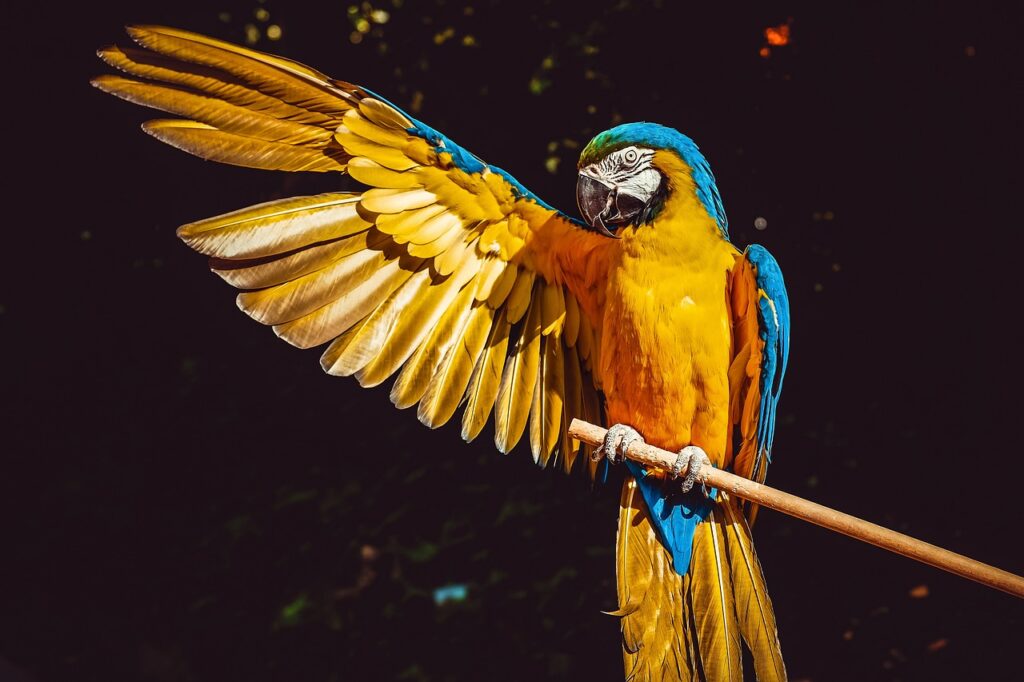
The final two feather types are the simplest. The first, called filoplumes, are long, rigid, and only have a few barbs. They function like a cat’s whiskers, allowing the birds to sense their immediate surroundings. In contrast, bristles are stiff, short feathers that lack barbs altogether. They protect the bird’s eyes and face from debris, like spiny goggles.
Feathers are a unique feature designed by a perfect Creator to perform an abundance of functions in birds. They impact every part of a bird’s life, from flight and survival to sensations and homeostasis. They also separate birds from all other groups in the extant animal kingdom.
Read more about bird feathers:
The Science of Feathers | Audubon
Feathers evolutionary enigma (creation.com)
Fossil Record of Feathers
People don’t realize just how diverse feathers are. Some, like pennaceous feathers, are more complex than others, like bristles or filoplumes. Moreso, we should not automatically assume that these diverse structures represent the complete extent of feather types throughout the history of life on earth. After all, many types of animals have disappeared from this planet, and with them any unique types of feathers they once had.
How Many Types of Feathers Are There in the Fossil Record?
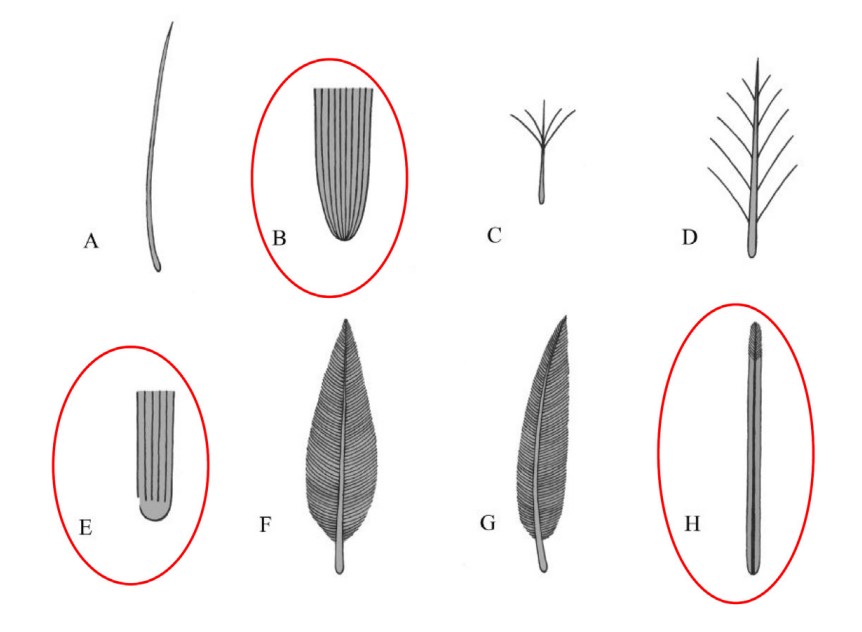
Specifically concerning the fossil record of feathers and feather-like structures, researchers have identified eight basic types. These include two varieties of veined feathers (symmetrical and asymmetrical), bristle (or rectal) feathers, and two varieties of downy feathers. There are three additional types of feathers (B, E, and H on the diagram)1 that are very unlike any feather known in present-day animals. Some scientists suggest that these are not actually unique feathers, but rather more typical feathers damaged during the fossilization process.2 Contact with water, for example, can give feathers a more filamentous appearance.3 Flattening underneath overlying sediment layers can also change their appearance through a process called compaction.
A recent study conducted an experiment where a researcher placed a dead European siskin (a species of modern bird) in a printing press to simulate the preservation conditions of feathered dinosaurs in the fossil record.4 The researcher discovered that such flattening made the feathers unrecognizable. When body fluids leaked out of the bird during compaction, they caused many of the feather barbs to stick together, giving them a “fused” appearance. As a result, the study concluded that the questionable feather types labeled, B, E, and H, are actually not unique-looking feathers at all. These feathers possibly had a more “normal” appearance in life, altered only by the fossilization process.
Are Fossil Feathers Just Frayed Collagen Fibers?
Some have suggested that many of the purported feathers in the fossil record are not really feathers at all, but frayed fibers of collagen. Collagen is a structural protein that occurs in the connective tissues of the body. It’s what gives our skin the ability to snap back into place after being stretched. After an animal has died, the collagen may start to fray as it decomposes.
However, there are a number of ways to determine whether the structures in question are actually feathers or just decayed collagen fibers. Collagen does not contain pigment, so if the structures possess evidence for pigment, such as melanosomes (the components of a cell that produce pigment), they cannot be collagen fibers.5
Melanosomes or Bacteria?
It should be noted that preserved melanosomes are similar in size and shape to bacteria, so scientists have developed several criteria they can use to distinguish the two.
- The structures in question occur embedded within the fossilized feathers, not as a film overlying the feathers. Specifically, they occur within the parts of the feather that exhibit melanosomes in modern birds.
- Eumelanosomes (which are responsible for the production, storage, and distribution of the melanin pigment) occur only within the dark-colored stripes of striped feathers, and not in light stripes. Bacteria would occur uniformly across the feather and not be restricted to specifically dark-colored stripes. Melanosomes, unless preserved in calcium phosphate, are also understandably absent from the central shaft of the feather because there is no pigment here in modern bird feathers.
- The packing and layering of melanosomes in modern bird feathers are identical to that seen in the fossil feathers preserving melanosomes. This would not be the case if these were preserved bacteria.
Taking a Closer Look
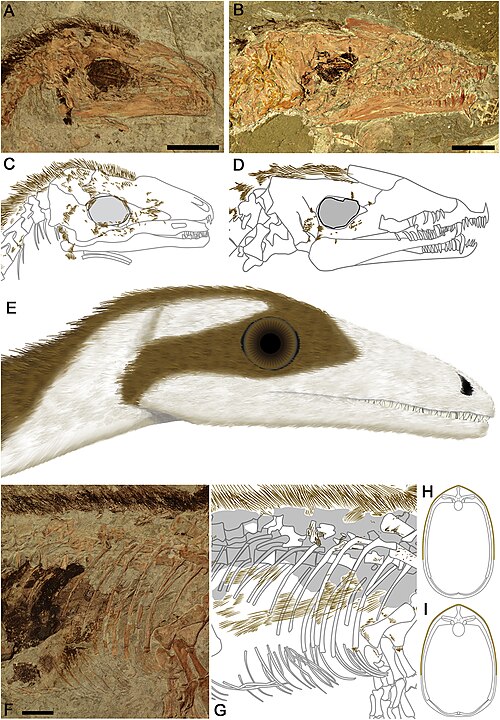
Another distinguishing feature between feathers and collagen fibers is the distribution of the filaments in question. As structures growing out of an animal’s skin, we expect feathers to occur very close to the bone where there is little muscle beneath the skin, such as the skull or along the end of the tail. However, the distance between the feathers and the bone should increase in areas where more muscle is present, such as the back vertebrae.6
Purported collagen fibers associated with a fossilized specimen of an ichthyosaur (an extinct, dolphin-like marine reptile) have sometimes been claimed to show great resemblance to many alleged feathers in the fossil record. However, a 2017 re-analysis of this specimen, using higher resolution imagery than previous studies, revealed that the “feather-looking” structures are not collagen fibers at all.7 Some were misinterpreted scratch marks, cracks, and crevasses left by the original fossil preparators (the people who prepare and clean fossils for scientific study, display, or further analysis). Others were misidentified features in the rock still encasing the fossil. Both sorts of features were only discernible under increased resolution.
The Secrets of Dinosaur Skin
While it is clear that many dinosaurs had feathers of various types, what was their actual skin like? Was it scaly like the skin of modern reptiles? Or was it smooth like birds and mammals? The answer is surprisingly more complicated than you might think!
Reptile Skin Gone Static
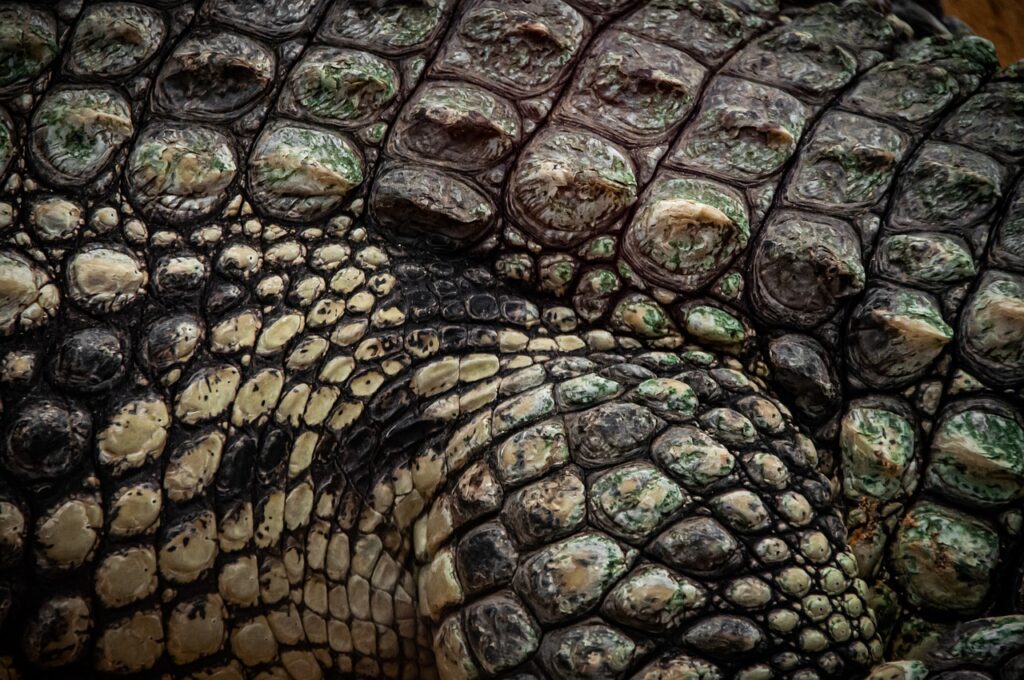
Not all scales are alike. Those of modern reptiles, like lizards and crocodiles, are different in their genetics and the way they develop as the animal grows from the scales we see on the legs and feet of modern birds. Importantly, reptile scales are static. This means that once scales develop, they cannot change their form as long as the rest of the animal lives. They cannot be induced to grow feathers or filaments.8
The Dynamics of Bird Skin
Birds have more dynamic behaviors than reptiles, and as such their skin must be more dynamic and adaptable to cope with these conditions. Bird skin allows for variations in the ratio of feather coverage and even the type of feathers covering the body. This is seen in how some birds are born bald or covered in down feathers. Adult feathers only develop as the bird grows up. Some birds even have different types of feathers for different times of year. This may especially be the case for non-migratory birds, which must survive not only hot summers, but cold winters as well. Birds can even modify the size and thickness of their foot and leg scales in response to seasonal changes. The wood pigeon, pheasant, and house sparrow have thicker scales in the winter months than summer months.9
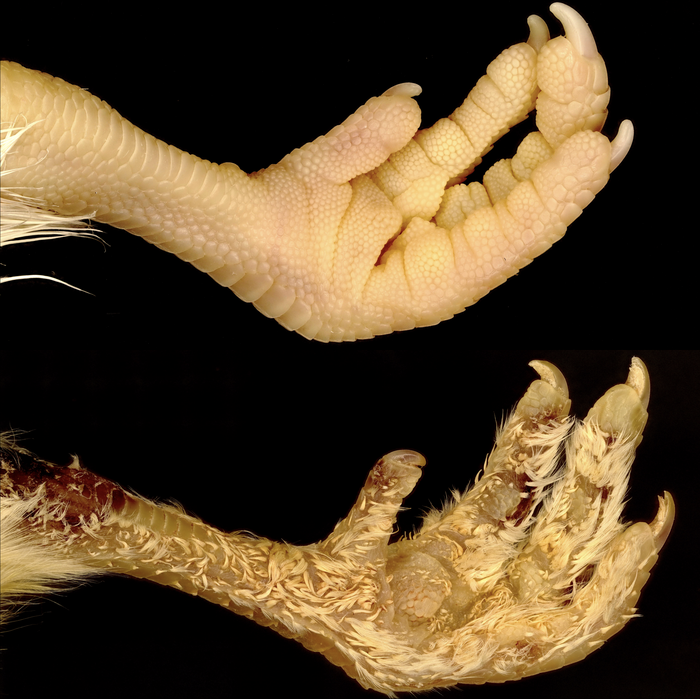
But perhaps one of the most incredible discoveries with bird skin is that the gulf between bird scales and feathers is not as wide as once thought. One recent study found that by injecting a certain molecule into a chicken embryo’s bloodstream resulted in a significant change in the expression of a gene called Sonic hedgehog, or Shh for short. This produced a cascade of developmental events that resulted in areas which normally develop scales to turn into downy feathers. Eventually, adult feathers replace these.10
Did Feathers Evolve from Reptile Scales?
We should note that this research does not shed light on the origin of feathers. Evolutionary biologists have long thought that bird feathers and scales are the result of common ancestry with modern reptiles. This would mean that the scales on bird legs are vestiges of this history. However, the ability for an organism (a chicken in this case) to produce either scales or feathers at an embryonic stage is already in place and does not tell us how either one originated. Due to the developmental and genetic differences between modern reptile scales and bird scales, many secular scientists now believe that each result from independent origins. They also believe that bird scales are technically modified feathers.11
What Kind of Skin Did Dinosaurs Have?
Tough and Scaly
Given the dynamic nature of modern dinosaur skin and the presence of feathers on some non-avian dinosaurs, we ought to consider what type of skin the extinct dinosaurs had. Researchers have found several dinosaur specimens with either preserved skin impression, or even the preserved skin itself. Many dinosaurs were entirely covered in a tough, scaly hide. The bones of a Borealopelta specimen, called the Suncor nodosaur, are covered in overlying skin laden with scales and keratin-sheathed osteoderms.12
Smooth and Flakey
Feathered dinosaurs, on the other hand, tend to possess smooth skin that lacks scales. A specimen of Sciurumimus preserves filamentous feathers rooted in large patches of skin on its tail.13 Another study analyzed the skin of a variety of feathered dinosaurs from China, including Beipiaosaurus, Microraptor, and its close relative, Sinornithosaurus.14 Not only was the skin of these dinosaurs smooth and scaleless, but the study also determined that they shed their skin in the form of dandruff. It did not shed in large pieces like lizards and snakes. But despite being covered primarily in feathers rooted in scaleless skin, these dinosaurs had scales as well. Microraptor and other small dinosaurs had tiny scales on the bottoms of their feet, just like modern birds.
Are Some Dinosaur “Scales” Really Just Modified Feathers?
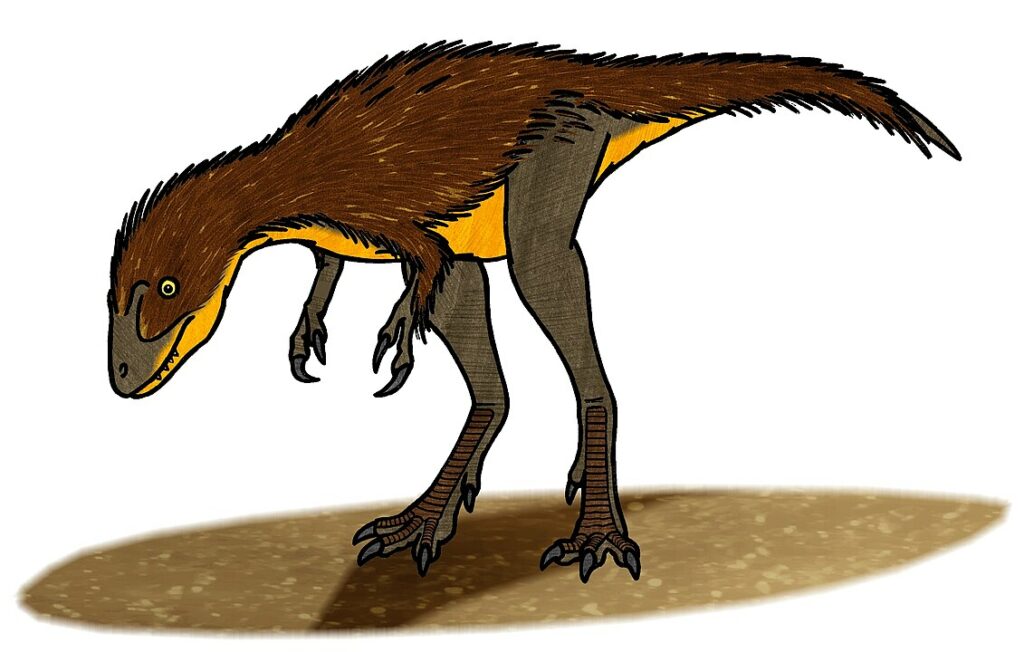
We also mustn’t forget that, as we learned in part III, some groups of dinosaurs contained both feathered and scaly species. Some researchers speculate that many of the scales of species within these groups may actually not be lizard- or crocodile-like scales. They may instead be genetically-modified feathers, similar to those of chickens from the aforementioned study.15 If correct, the dynamic nature of modern dinosaur skin raises the possibility that the skin of extinct dinosaur skin, scales, and feathers are far more complex than we have ever imagined. Some paleontologists suggest that some could have significantly altered their appearance over the course of their lives. Is it possible that some hatchlings looked radically different from their parents? Were baby Tyrannosaurus born with fuzzy feathers that later transitioned into scales by adulthood? Could some dinosaurs have altered their appearance in response to different seasonal changes?
Currently, we have no direct evidence for these types of transformations. However, the dynamic nature of bird skin suggests that the idea that some dinosaur scales are modified feathers deserves further investigation.
Conclusion
The efforts of paleontologists over the decades have developed a hefty understanding of feathered dinosaurs. As a result, we now have a much better idea about which dinosaurs were completely covered in feathers and which were not. We also have a more complete picture of the nested hierarchy of not just dinosaurs, but life in general. Studies of dinosaur feathers have taught us how to distinguish feathers from lookalikes in the fossil record, and unlock the secrets of dinosaur coloration. Whether someone is a young-earth creationist or not, feathered dinosaurs are a celebration of just how far we have come in understanding of God’s creation.
In the final part of this series, we take another look at some of the different types of feathered dinosaurs and try to make sense of them from a biblical, young-earth perspective.
Feathered by Design Series
It Started with a Feather? (Part I)
Maws, Claws, and Classification Laws (Part II)
Dino-Birds and Fuzzy Lizards (Part III)
According to Their Kinds (Part V)
Acknowledgements
Thanks to Christian Ryan for contributing to the content of this article.
Footnotes
- Xu, X., and Y. Guo. (2009). “The origin and early evolution of feathers: insights from recent paleontological and neontological data.” Vertebrata PalAsiatica 47, no. 4:311-329. ↩︎
- Benton, M.J., Z. Zhou, P.J. Orr, F. Zhang, and S.L. Kearns. (2008). “The remarkable fossils from the Early Cretaceous Jehol Biota of China and how they have changed our knowledge of Mesozoic life.” Proceedings of the Geologists’ Association 119:209-228. ↩︎
- Kundrát, M. (2004). “When did theropods become feathered? Evidence for pre-Archaeopteryx feathery appendages.” Journal of Experimental Zoology (Mol Dev Evol) 302B:355-364 ↩︎
- Foth, C. (2012). “On the identification of feather structures in stem-line representatives of birds: evidence from fossils and actuopalaeontology.” Paläontologie Zeitschrift 86:91-102. ↩︎
- Zhang, F., Kearns, S.L., Orr, P.J., Benton, M.J., Zhou, Z., Johnson, D., Xu, X. and Wang, X. (2010). “Fossilized melanosomes and the colour of Cretaceous dinosaurs and birds.” Nature, 463(7284), pp.1075-1078. ↩︎
- Chen, P. J., Dong, Z. M., & Zhen, S. N. (1998). “An exceptionally well-preserved theropod dinosaur from the Yixian Formation of China.” Nature, 391(6663), 147-152. ↩︎
- Smithwick, F. M., Mayr, G., Saitta, E. T., Benton, M. J., & Vinther, J. (2017). “On the purported presence of fossilized collagen fibres in an ichthyosaur and a theropod dinosaur.” Palaeontology, 60(3), 409-422. ↩︎
- Dhouailly, D. (2009). “A new scenario for the evolutionary origin of hair, feather, and avian scales.” Journal of anatomy, 214(4), 587-606. ↩︎
- Lennerstedt, I. (1975). “Seasonal variation in foot papillae of wood pigeon, pheasant and house sparrow.” Comparative Biochemistry and Physiology Part A: Physiology, 51(3), 511-520. ↩︎
- Cooper, R. L., & Milinkovitch, M. C. (2023). “Transient agonism of the sonic hedgehog pathway triggers a permanent transition of skin appendage fate in the chicken embryo.” Science Advances, 9(20), eadg9619. ↩︎
- Sawyer, R. H., & Knapp, L. W. (2003). “Avian skin development and the evolutionary origin of feathers.” Journal of Experimental Zoology Part B: Molecular and Developmental Evolution, 298(1), 57-72. ↩︎
- Brown, C. M. (2017). “An exceptionally preserved armored dinosaur reveals the morphology and allometry of osteoderms and their horny epidermal coverings.” PeerJ, 5, e4066. ↩︎
- Foth, C., Haug, C., Haug, J. T., Tischlinger, H., & Rauhut, O. W. (2020). Two of a feather: a comparison of the preserved integument in the juvenile theropod dinosaurs Sciurumimus and Juravenator from the Kimmeridgian Torleite Formation of southern Germany. The Evolution of Feathers: From Their Origin to the Present, 79-101. ↩︎
- McNamara, M.E., Zhang, F., Kearns, S.L., Orr, P.J., Toulouse, A., Foley, T., Hone, D.W., Rogers, C.S., Benton, M.J., Johnson, D. and Xu, X. (2018). “Fossilized skin reveals coevolution with feathers and metabolism in feathered dinosaurs and early birds.” Nature Communications, 9(1), p.2072. ↩︎
- Bell, P. R., Campione, N. E., Persons IV, W. S., Currie, P. J., Larson, P. L., Tanke, D. H., & Bakker, R. T. (2017). “Tyrannosauroid integument reveals conflicting patterns of gigantism and feather evolution.” Biology letters, 13(6), 20170092. ↩︎

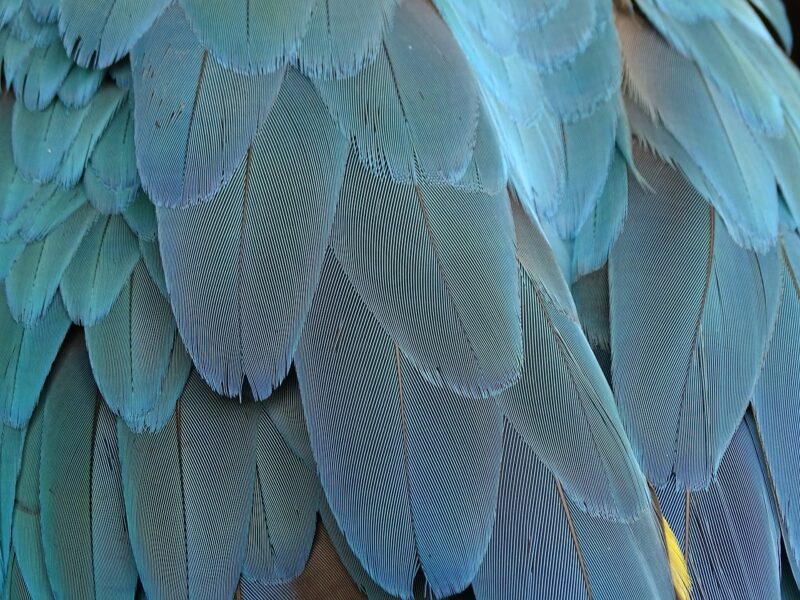





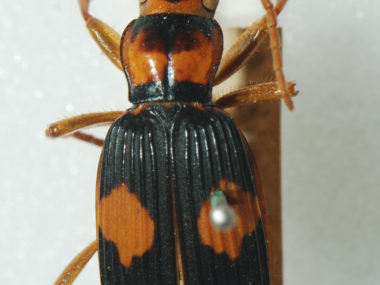




lots of great info on feathers and in a compact way. the thing about theropod dinosaurs is how birdlike they are. wE know god created birds. We don’t know he created theropod dinosaurs or dinosaurs. We have only rough and ready fossils.
the feathers simply could be more evidence that theropod dinos were just flightless ground birds in a spectrum of diversity. the simple answer. Yes they had feathers because they glew or once did. The good thing is to say that these so called reptiles did have feathers and thats unlikely unless they needed them for flying. so organized creationism should learn here and stop plucking these birds of feathers.